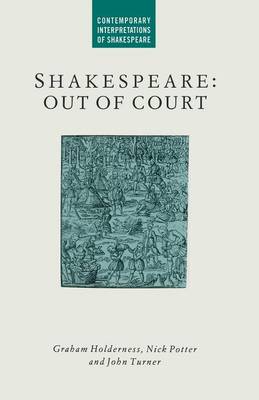Contemporary Interpretations of Shakespeare
3 total works
This book examines six plays by Shakespeare (Love's Labour's Lost, Hamlet, As You Like It, Twelfth Night, The Winter's Tale, and The Tempest) as dramatizations of the Renaissance court in its developing history - a history searched by Shakespeare to disclose its most characteristic gains and losses. For these plays do not simply celebrate Tudor and Stuart rule: they scrutinize it too, in the centre of its institutional theatre of power, the court. This book shows how, if the plays came into the court, the court also came into the plays, with its most salient features - its competitiveness, its inner tensions and its contradictions, its language, its cultural life and its entertainments - exposed to the scrutiny of an art-form that proved itself to be a new mode of historical understanding.
Shakespeare: The Play of History
by G. Holderness, J. Turner, and Nick Potter
Published 16 February 1988
This book examines six plays by Shakespeare (Love's Labour's Lost, Hamlet, As You Like It, Twelfth Night, The Winter's Tale, and The Tempest) as dramatizations of the Renaissance court in its developing history - a history searched by Shakespeare to disclose its most characteristic gains and losses. For these plays do not simply celebrate Tudor and Stuart rule: they scrutinize it too, in the centre of its institutional theatre of power, the court. This book shows how, if the plays came into the court, the court also came into the plays, with its most salient features - its competitiveness, its inner tensions and its contradictions, its language, its cultural life and its entertainments - exposed to the scrutiny of an art-form that proved itself to be a new mode of historical understanding.


